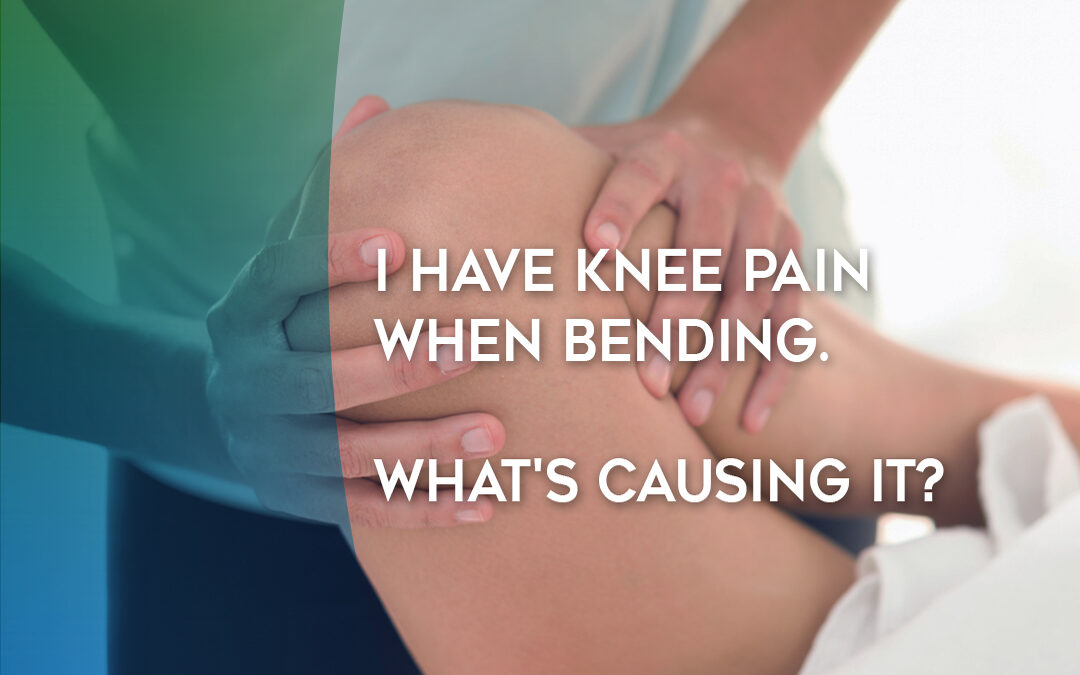Knee Pain In Back When Bending
Knee Pain In Back When Bending - Have you been experiencing pain in your knees when you bend? It can be a frustrating experience, especially if it limits your mobility and prevents you from carrying out your day-to-day activities. You are not alone in this experience. Knee pain when bending is a common complaint and can be caused by a variety of factors. In this post, we'll discuss some of the possible causes of this pain, treatment options, and tips to prevent knee pain when bending.
Causes of Knee Pain When Bending
1. Osteoarthritis
Osteoarthritis is a common cause of knee pain when bending, especially in older people. This type of arthritis is a degenerative joint disease that occurs when the cartilage that cushions the bones in the knee joint wears away over time, causing the bones to rub against each other. This friction can cause pain and stiffness in the joint, especially when you try to bend your knee.

2. Tendinitis
Tendinitis is an inflammation of the tendons that attach to the knee joint. This inflammation can be caused by overuse or repetitive strain on the knee joint, such as running or jumping. Tendinitis can cause pain when you bend your knee, as well as swelling and stiffness in the joint.

3. Meniscus Tear
A meniscus tear is a common injury that can occur when you twist or turn your knee with force, such as during sports or other physical activities that involve sudden changes of direction. A meniscus tear can cause pain when you bend your knee, especially if it catches or locks up as you move.
:max_bytes(150000):strip_icc()/kneepainfinal-01-5c633037c9e77c0001d32372.png)
4. Bursitis
Bursitis is an inflammation of the bursae, small fluid-filled sacs that cushion the bones, tendons, and muscles near your joints. This inflammation can cause pain and swelling in the knee joint, especially when you bend your knee. Bursitis can be caused by injury, overuse, or infection.

Treatment Options for Knee Pain When Bending
The treatment options for knee pain when bending depend on the cause and severity of your pain. Some common treatment options include:
1. Rest and Ice
If your knee pain is caused by an injury or overuse, you may need to rest the affected knee and apply ice to reduce swelling and inflammation. Resting your knee can also help prevent further injury and give your body time to heal.
2. Physical Therapy
If your knee pain is caused by a chronic condition, such as osteoarthritis or tendinitis, physical therapy may help ease your symptoms. A physical therapist can teach you exercises to strengthen the muscles around your knee, improve your range of motion, and reduce pain and stiffness in the joint.
3. Medications
Your doctor may recommend over-the-counter or prescription medications to help relieve your knee pain. These medications may include nonsteroidal anti-inflammatory drugs (NSAIDs), such as ibuprofen or naproxen, to reduce pain and inflammation, or corticosteroid injections to reduce inflammation in the knee joint.
Preventing Knee Pain When Bending
Preventing knee pain when bending is possible by following these tips and ideas:
1. Maintain a Healthy Weight
Being overweight can put extra pressure on your knees, which can increase your risk of knee pain and injury. Maintaining a healthy weight can help reduce your risk of knee problems and alleviate existing knee pain.
2. Wear Supportive Shoes
Wearing supportive shoes that fit properly can help reduce the stress on your knees when you walk, run, or engage in other physical activities. Avoid shoes with high heels or flat soles, as these can alter the alignment of your feet and increase stress on your knees.
3. Exercise Regularly
Regular exercise can help strengthen the muscles around your knee, improve range of motion, and reduce your risk of knee pain and injury. Low-impact exercises, such as swimming, cycling, or walking, can help you stay active without putting undue stress on your knees.
4. Use Proper Form During Physical Activities
Using proper form and technique when engaging in physical activities, such as running or weightlifting, can help reduce your risk of knee injury and pain. Always warm up before engaging in physical activity, and stop if you experience pain, swelling, or discomfort in your knee.
Conclusion
Knee pain when bending can be a frustrating and debilitating experience, but it doesn't have to control your life. By understanding the causes of knee pain, exploring treatment options, and taking steps to prevent knee injury and pain, you can regain your mobility and enjoy your life to the fullest. If your knee pain persists or worsens, it's important to see a doctor or physical therapist to determine the underlying cause and develop an effective treatment plan.
Find more articles about Knee Pain In Back When Bending
Post a Comment for "Knee Pain In Back When Bending"